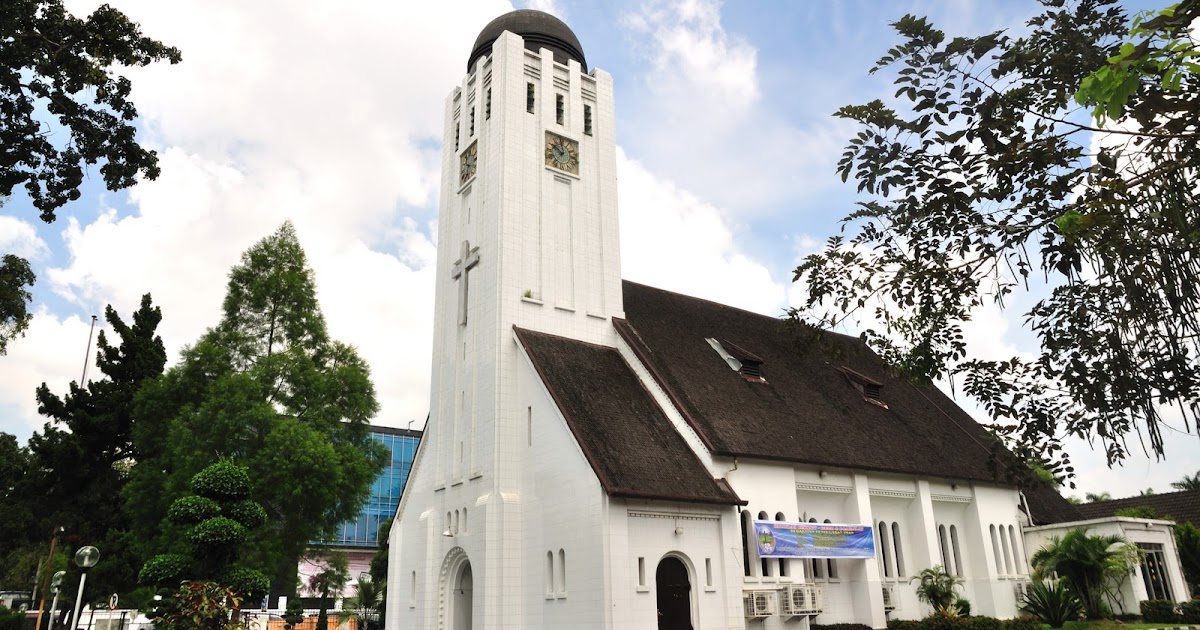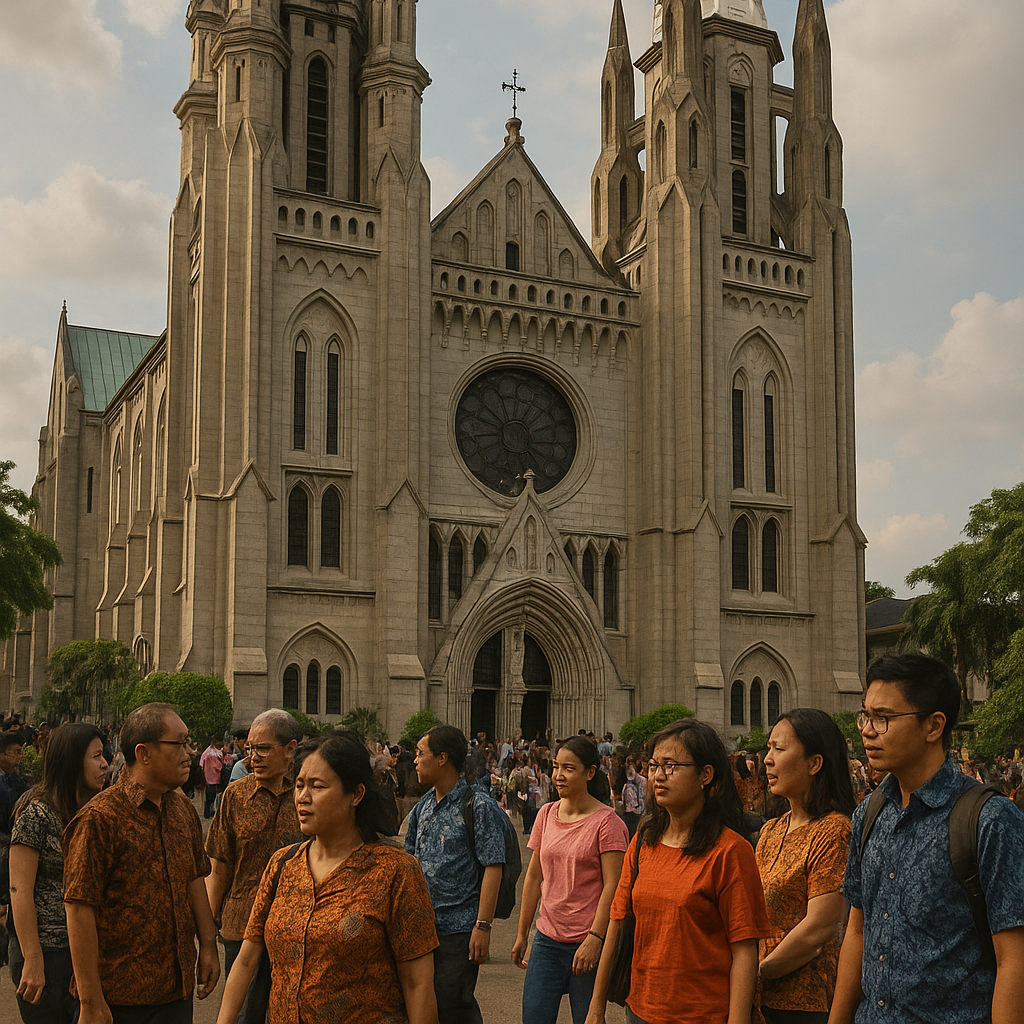Immanuel Medan GPIB, the Oldest Church in Medan
theolingua.id – The Immanuel Medan Protestant Church in Western Indonesia (GPIB) is the oldest church in Medan, having been established more than 100 years ago. Its existence reflects the rapid development of this city since the 19th century, along with the economic and infrastructural growth influenced by Dutch colonialism.
Located at Jalan Pangeran Diponegoro No. 25-27, Madras Hulu, Medan Polonia District, this church is one of the historical icons that still stands strong today. With its distinctive European architecture, GPIB Immanuel is not only a place of worship but also a silent witness to various important events in the history of Medan City.
History of the Establishment of GPIB Immanuel Medan
The existence of GPIB Immanuel Medan is closely related to the history of Dutch colonialism in Indonesia. According to the Dutch Staatsblad (State Gazette) archive of 1912 No. 497, this church has been standing since 1912. However, some sources mention that the church building has been around since 1902, based on the church bells made in Amsterdam.
The relocation of the centre of government of the Resident of East Sumatra from Bengkalis to Medan in 1886 accelerated the construction of infrastructure, including places of worship. The contract between the Dutch colonial government and the Deli Sultanate, signed by Sultan Ma’Mun Al Rasjid and the first Mayor of Medan, Baron Daniel Mackay, also played a role in the establishment of this church.
The church was originally called De Protestantse Kerk In Westerlijk Indonesie or Indische Kerk, which only served the Dutch community, including KNIL soldiers, civil servants, and indigenous people who worked for the colonial government.
Development and Change of Church Name
In the early 1900s, the spirit of nationalism began to develop, including in the church environment. In 1948, the church officially became part of GPIB, which was the result of the reorganisation of Protestant churches in western Indonesia. This change also marked the independence of the church from the Dutch colonial government.
Apart from GPIB Immanuel Medan, other Protestant churches such as the Christian Evangelical Church in Minahasa (GMIM), the Protestant Church in Maluku (GPM), and the Christian Evangelical Church in Timor (GMIT) were also established in the same period to serve people in various regions of Indonesia.
Architecture and Building Structure

GPIB Immanuel Medan features Renaissance architecture with distinctive tall towers, large clocks, and bells that can be heard up to three kilometres away. The building has undergone several renovations throughout its history:
- 1948: The original wooden floors were replaced with tiles.
- 1961: Repair of walls and ceilings due to termite damage.
- 1992: Renovation of the tower and front door with blue tiles.
Officially, the church was designated a cultural heritage site by the Medan City Government on 28 October 2021.
Building Data of GPIB Immanuel Medan
- Land area: 8,097.50 m²
- Land status: Freehold No. 37 Year 1920
- Main church building: 15 x 25 metres
- Alfa Omega Meeting Hall: 43 x 35 metres
- Dorkas Parents’ Housing: 24 x 18 metres
- Sunday School Classroom: 35 x 21 metres
- Pastor’s House: 13 x 16 metres
Present Day of GPIB Immanuel Medan
During the Japanese occupation, this church was used as a warehouse. After World War II, this building was used by the Anglican congregation. Now, GPIB Immanuel Medan is a religious and social centre for more than 690 families (around 2,760 people) from various ethnic backgrounds.
Sunday service schedule at GPIB Immanuel Medan:
- 07.00 WIB
- 09.30
- 17.00
In addition, there are various religious and social activities, such as:
- Family services (every Wednesday in 8 different sectors)
- Prayer fellowship (every Saturday)
- Categorical services for children, teenagers, young people, mothers, fathers, and the elderly
- Social assistance for underprivileged families, scholarships for underprivileged children, and orphanages for the elderly
- Crisis centres for disaster management in affected areas
The church also has a clinic that provides general practitioner and specialist services, and plans to develop psychology and psychiatry services. In addition, GPIB Immanuel Medan collaborates with correctional institutions to provide religious services for prisoners.
Conclusion
As the oldest church in Medan, GPIB Immanuel is not only a spiritual centre but also part of the city’s history. From the colonial period to the modern era, this church has witnessed the social, economic and political changes that have taken place in Medan. Its sturdy building and distinctive European architecture are a special attraction, inviting not only congregations but also tourists and historians who are interested in delving deeper into its history.
In addition to playing a role in spiritual life, GPIB Immanuel is also active in various social and community activities. Programs such as social assistance, scholarships for underprivileged children, and health services for congregations and the wider community demonstrate its commitment to service. With its status as a cultural heritage site, the church is expected to be preserved as a historical and religious legacy for future generations, and to continue to contribute to the life of the people of Medan.







